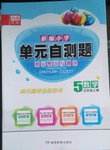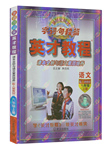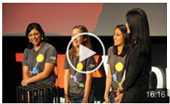题目内容
5.In business,there is a speed difference:It's the difference between how important a firm's leaders say speed is to their competitive (竞争的) strategy(策略)and how fast the company actually moves.The difference is important regardless of industry and company size.Companies fearful of losing their competitive advantage spend much time and money looking for ways to pick up the speed.In our study of 343businesses,the companies that chose to go,go,go to try to gain an edge ended with lower sales and operating incomes than those that paused at key moments to make sure they were on the right track.What's more,the firms that"slowed down to speed up"improved their top and bottom lines,averaging 40% higher sales and 52% higher operating income over a three-year period.
How did they disobey the laws of business physics,taking more time than competitors yet performing better?They thought differently about what"slower"and"faster"mean.Firms sometimes fail to understand the difference between operation speed (moving quickly) and strategic speed (reducing the time it takes to deliver value).Simply increasing the speed of production,for example,may be one way to try to reduce the speed difference.But that often leads to reduced value over time,in the form of lower-quality products and services.
In our study,higher performing companies with strategic speed always made changes when necessary.They became and discussion.They encouraged new ways of thinking.And they allowed time to look and learn.By contrast (相比而言),performance suffered at firms that moved fast all the time,paid too much attention to improving efficiency,stuck to tested methods,didn't develop team spirit among their employees,and had little time thinking about changes.
Strategic speed serves as a kind of leadership.Teams that regularly take time to get things right,rather than plough ahead full bore,are more successful in meeting their business goals.That kind of strategy must come from the top.
57.What does the underlined part"gain an edge"in Paragraph 2mean?B
A.Increase the speed.
B.Get an advantage.
C.Reach the limit.
D.Set a goal.
58.The underlined part"the laws of business physics"in Paragraph 3meansD.
A.spending more time and performing worse.
B.spending more time and performing better
C.spending less time and performing worse
D.spending less time and performing better
59.What can we learn from the text?C
A.How fast a firm moves depends on how big it is.
B.How competitive a firm is depends on what it produces.
C.Firms guided by strategic speed take time to make necessary changes.
D.Firms guided by operational speed take time to develop necessary team spirit.
60.Where could be the last title for the text?D
A.Improve quality?Serve better.
B.Deliver value?Plough ahead.
C.Reduce time?Move faster.
D.Need speed?Slow down.
分析 文章讲述了商业发展中的速度问题.发展速度作为一种竞争策略在商业发展中很重要,不管是什么类型的,什么规模的公司.因为担心失去竞争优势,一些公司会花大量的时间和资金去提高发展速度.然而,很多商业研究表明,一味的注重生产速度,而忽视了商品的价值含量,不是一种好的创业方法.研究表明,发展好的公司注意战略速度,能因时而变,注重效率,从而迈向成功.这样的发展模式才是真正的速度.
解答 57.B 猜测词意题.根据第一段中"Companies fearful or losing their competitive advantage spend much time and money looking for ways to pick up the speed."和第二段中的"the companies that chose to go,go,go to try to gain an edge ended with lower sales and operating incomes…"可知那些害怕丢掉竞争优势的公司会一味的追求速度,想得到速度上的优势.结果常常事与愿违.故选B.
58.D 猜测词意题.根据第三段中第一句话可知那些"不遵循"(disobey)商业法则的公司比竞争者花的时间多(速度慢)却表现得更好,反过来商业法则应该是"花更少的时间(速度快),做得更好".故选D.
59.C 推理判断题.根据倒数第二段中的"higher performing companies with strategic speed always made changes when necessary"可知受战略速度指导的公司会实时的对公司的战略做出调整.根据第一段中的"The difference is important regardless of industry and company size."可知公司行动的快慢,竞争力的大小与公司的大小和生产的东西无关,排除A、B项.故选C.
60.D 主旨大意题.本文主要阐述了在商业竞争中并不是速度越快越好,相反那些速度慢的公司会根据情况实时调整战略往往会取的竞争的优势.商业发展欲速而不达,故选D.
点评 阅读理解是考查语篇理解能力.常考的题型有:推理判断题;主旨大意题;细节理解题;猜测词意题.近几年又出现了两种新的考查方式:写作态度判断题和文章结构题.解题时,在读懂文章的基础上,还有特别注意掌握题型的特征,尤其是细节题和推断题不可混淆:细节题是文章信息的再现;推断题是文章信息的提取.本题是广告类文章,考查主要是以细节题为主,细节题要注意常用的出题陷阱有:夸大,缩小,张冠李戴,偷梁换柱,无中生有等,做题时要看清看准.

 新编小学单元自测题系列答案
新编小学单元自测题系列答案 字词句段篇系列答案
字词句段篇系列答案| A. | affair | B. | event | C. | matter | D. | variety |
 | William Kamkwamba:How I harnessed the wind At age 14,in poverty and hunger,a Malawian boy built a windmill to power his family's home.Now at 22,William Kamkwamba,who speaks at TED for the second time,shares in his own words the moving tale of invention that changed his life. |
 | |
 | Thomas Suarez:A 12-year-old app developer Most 12-year-olds love playing videogames-but Thomas Suarez taught himself how to create them.After developing iPhone apps like"Bustin Jeiber,"a hit-a-mouse game,he is now using his skills to help other kids become developers. |
 | |
 | Amy O'Toole,Beau Lotto: Science is for everyone,kids included What do science and play have in common?Scientist Beau Lotto thinks all people (kids included) should participate in science and,through the process of discovery,change understanding.He's supported by 12-year-old Amy O'Toole,who,along with 25 of her classmates,published the first peer-reviewed article by schoolchildren.It starts:"Once upon a time…" |
 | |
 | Lauren Hodge,Shree Bose,Naomi Shah: Award-winning teenage science in action In 2011 three young women swept the top prizes of the first Google Science Fair.Lauren Hodge,Shree Bose and Naomi Shah describe their extraordinary projects-and their route to a passion for science. |
 |
A.used B.stopped C.chased D.produced
71.According to the passage,Thomas SuarezB.
A.made big money by developing games
B.learned to develop apps by himself
C.spent all his time on computer games
D.taught adults to develop video games
72.Danny,a 16-year-old boy who is working on a science project and planning to participate in an online competition.Which of the following will he most probably watch?D
A.How I harnessed the wind
B.A 12-year-old App Developer
C.Science for Everyone,Kids Included
D.Award-winning Teenage Science in Action
73.All these TED videos aim toD.
A.analyze the different ways to success
B.promote the latest scientific inventions
C.introduce the famous teenage speakers
D.encourage passion for science and creativity.
